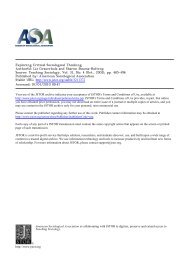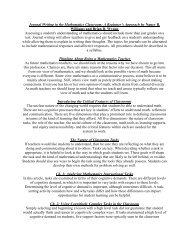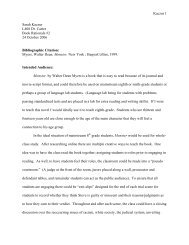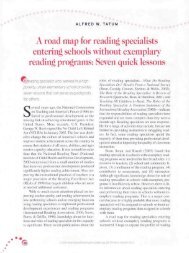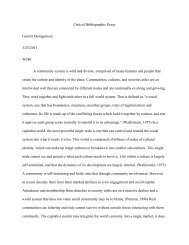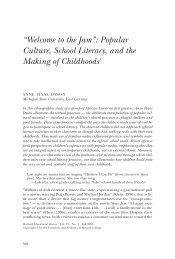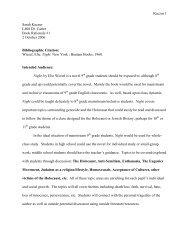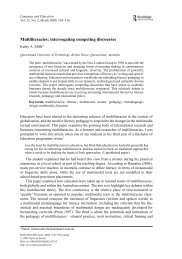Rose 2005 Pragmatics Synthesis.pdf - Oncourse
Rose 2005 Pragmatics Synthesis.pdf - Oncourse
Rose 2005 Pragmatics Synthesis.pdf - Oncourse
You also want an ePaper? Increase the reach of your titles
YUMPU automatically turns print PDFs into web optimized ePapers that Google loves.
386 K.R. <strong>Rose</strong> / System 33 (<strong>2005</strong>) 385–399<br />
Keywords: <strong>Pragmatics</strong>; Politeness; Communicative language teaching; English as a second language instruction<br />
1. Introduction<br />
This paper examines what research on pedagogical intervention has to say about<br />
the effects of different instructional strategies for second language pragmatic learning.<br />
The rationale for examining the effects of instruction in pragmatics is underscored<br />
by SchmidtÕs (1993) contention that simple exposure to the target language<br />
is insufficient – pragmatic functions and relevant contextual factors are often not<br />
salient to learners and so not likely to be noticed even after prolonged exposure. Furthermore,<br />
Bardovi-Harlig (2001) makes a strong case for the necessity of instruction,<br />
documenting that second language learners who do not receive instruction in pragmatics<br />
differ significantly from native speakers in their pragmatic production and<br />
perception in the target language. I will first discuss the learning targets, learner characteristics,<br />
and learning contexts represented in the small, but growing body of research<br />
on the effects of instruction in second language pragmatics. Following this,<br />
I turn to three central questions relating to the effect of instruction on pragmatics:<br />
whether pragmatics is teachable, whether instruction in pragmatics produces results<br />
that outpace exposure alone, and whether different instructional approaches yield<br />
different outcomes.<br />
2. Learning targets<br />
A wide range of discoursal, pragmatic, and sociolinguistic targets of instruction<br />
have been the object of research on the effectiveness of instruction in pragmatics.<br />
These include discourse markers and strategies, pragmatic routines, speech acts,<br />
overall discourse characteristics, and pragmatic comprehension.<br />
Among the studies that have examined the effects of instruction on discourse<br />
markers and strategies are Wildner-BassettÕs (1984, 1986) work on gambits in English<br />
and YoshimiÕs (2001) study of Japanese interactional discourse markers. Wildner-Bassett<br />
selected as the object of instruction formulas and conversational<br />
routines for speech acts such as expressions of (dis)agreement and requests. Yoshimi<br />
(2001) focused on the Japanese discourse markers n desu, n desu ne, and n desu kedo,<br />
all of which ‘‘play important roles in organizing the presentation of an extended telling,<br />
and in expressing the speakerÕs interpersonal orientation in such a telling’’<br />
(p. 224). The various functions of these three interactional markers represent a range<br />
of important, and often subtle, aspects of the pragmatics of Japanese oral narratives.<br />
Pragmatic routines represented in the literature include the various functions of Japanese<br />
sumimasen in Tateyama et al. (1997) and Tateyama (2001), as well as hedging<br />
in academic writing and computer-mediated discourse in Wishnoff (2000). In the



